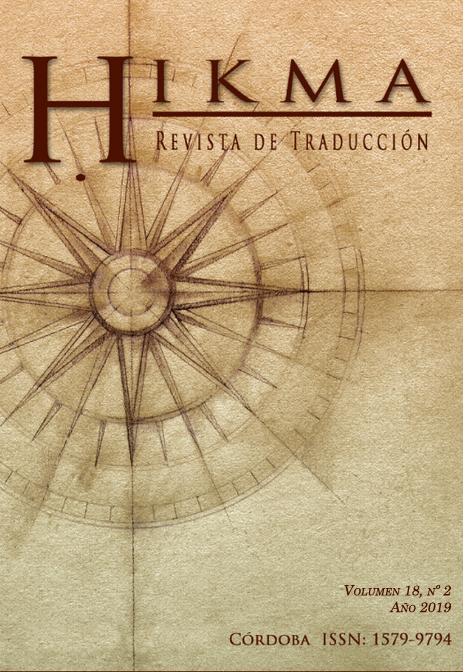Production of access services in immersive content: understanding the needs of audio describers
Contenido principal del artículo
Resumen
This article describes the development and the results of usability tests of an audio description web editor developed within the Immersive Accessibility (ImAc) project. The editor’s novelty is that it allows audio describers to produce audio description in 360° content, known also as spherical videos or omnidirectional videos. Such videos offer a 360-degree field of view horizontally and a 180-degree field of view vertically, which means that they differ from standard 2D content watched on rectangular screen in a way that users can explore the 360° sphere by head movements. The usability tests have been conducted with professional audio describers from different countries. In the first part of the article, the study is presented within a broader context, introducing the project and the main challenges related to providing access services in 360° content. Secondly, the main features of the editor, used both when editing standard two-dimensional content and specific to the medium under discussion are explained. Then, the methodological aspects of the test, such as measures, participants, materials, and experimental protocol, are discussed in detail. The discussion of the results is offered in the final part of the article, and it provides some insights on how professional describers approach new technologies, and what functions do they need to provide AD in an efficient way.
Descargas
Los datos de descargas todavía no están disponibles.
Detalles del artículo
Cómo citar
Fidyka, A., & Matamala, A. (2019). Production of access services in immersive content: understanding the needs of audio describers. Hikma, 18(2), 277–300. https://doi.org/10.21071/hikma.v18i2.11683
Número
Sección
Artículos

Esta obra está bajo una licencia internacional Creative Commons Atribución-NoComercial-CompartirIgual 4.0.
Los autores que publican en esta revista aceptan las siguientes condiciones:
- Los autores conservan los derechos de autor y conceden a la revista el derecho de primera publicación con el trabajo simultáneamente bajo una Licencia de Atribución Creative Commons que permite a otros compartir el trabajo con un reconocimiento de la autoría del trabajo y la publicación inicial en esta revista.
- Los autores pueden llegar a acuerdos contractuales adicionales por separado para la distribución no exclusiva de la versión publicada del trabajo en la revista (por ejemplo, enviarlo a un repositorio institucional o publicarlo en un libro), con un reconocimiento de su publicación inicial en esta revista.
- Se permite y anima a los autores a publicar sus trabajos en línea (por ejemplo, en repositorios institucionales o en su sitio web) antes y durante el proceso de presentación, ya que puede dar lugar a intercambios productivos, así como a una citación más temprana y mayor del trabajo publicado (Véase El efecto del acceso abierto).

